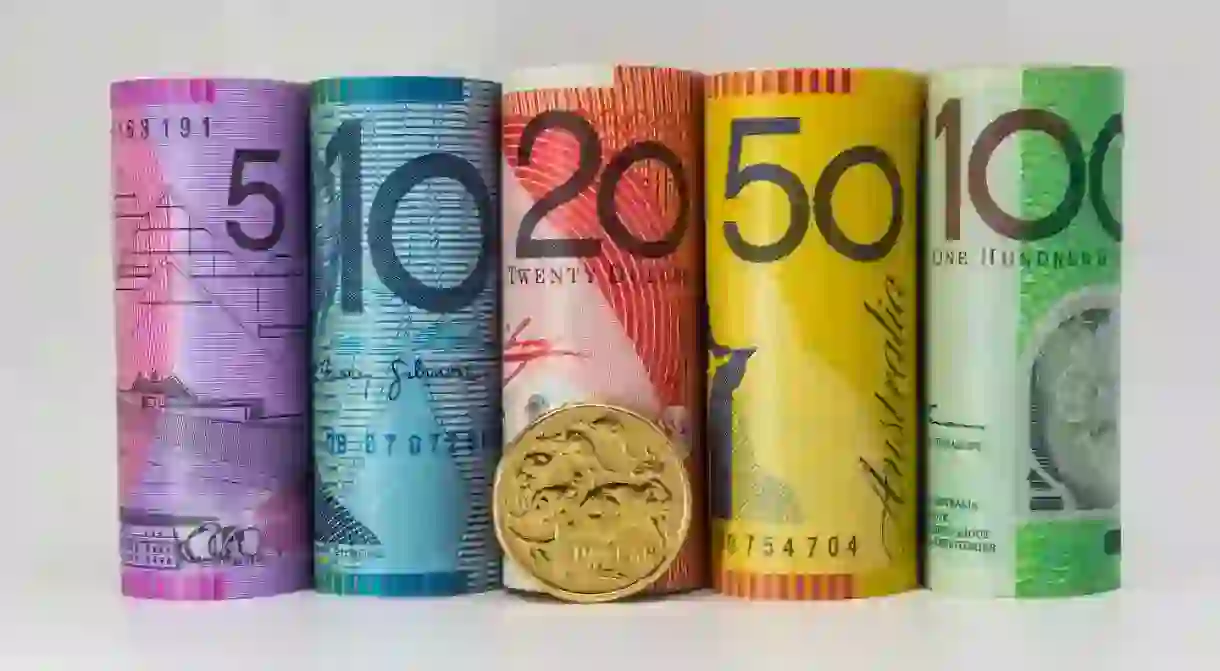A Guide to Australia's Banknotes

Australia’s banknotes are as colourful as the country itself, with a series of mauve, blue, red, yellow and green notes filling wallets across the country. But who are the faces that adorn the AUD? Read on to find out.
History
The first Australian banknotes were issued on 14 February, 1966, when the country swapped the Australian pound for a new decimal currency. AUD originally came in denominations of $1, $2, $10 and $20 (as well as 1¢, 2¢, 5¢, 10¢ and 20¢ coins), before adding the $5 in 1967, $50 in 1973 and $100 in 1984.
Early designs
The design of those first banknotes focused on Australian flora and fauna, as well as the country’s achievements in the fields of science and architecture, in particular. Agronomist William Farrer, botanist Joseph Banks, humanitarian Caroline Chisolm, convict/architect Francis Greenway, aviator Charles Kingsford Smith, CSIRO godfather Ian Clunies Ross and Antarctic explorer Douglas Mawson were a few of the faces to appear alongside native plants and animals.

Polymer pioneers
Australia produced the world’s first polymer banknotes in 1988, commemorating the bicentenary of European colonisation in Australia. That groundbreaking $10 bill featured the First Fleet arriving in Sydney Cove on one side and a portrait of an Indigenous man on the other and featured a cutting-edge transparent ‘window’ depicting Captain James Cook as an anti-counterfeit security measure.

The Reserve Bank of Australia replaced $1 and $2 notes with coins in the 1980s, then phased out the original banknotes with polymer replacements between 1992 and 1996. These new plastic bills also celebrated a new set of public figures who have made a significant contribution to Australian society.
$5
The mauve-coloured fiver features Queen Elizabeth II on its front side and Canberra’s Parliament House on the reverse. A special version was produced in 2001 to mark the centenary of Australia’s federation, depicting long-serving New South Wales premier and ‘father of federation’ Henry Parkes, plus writer and suffragist Catherine Helen Spence. A new ‘Next Generation’ version with an expanded transparent window and a tactile feature for the visually impaired has been in circulation since 2016.

$10
The light blue tenner carries portraits of two giants of Australian literature, Andrew ‘Banjo’ Paterson and Dame Mary Gilmore. Paterson is shown alongside horses representing his iconic poem The Man from Snowy River, and Gilmore is drawn with verses from her poetry as well as motifs from her writing. A Next Generation $10 banknote was also issued in 2017.

$20
Affectionately known as a ‘lobster’ due to its red colour, the $20 banknote portrays convict businesswoman Mary Reibey and protestant minister John Flynn. Reibey appears alongside a sailing ship and a colonial-era building, while Flynn is accompanied by an early Qantas plane, symbolising the Royal Flying Doctor Service he founded, vastly improving the quality of medical care in outback Australia.

$50
The $50 bill — nicknamed a ‘pineapple’ because of its yellow hue — includes Indigenous polymath David Unaipon and female trailblazer Edith Cowan. Unaipon sits alongside a collection of his inventions that helped smash archaic stereotypes about Aboriginal people, and Cowan — who championed the welfare of women and children in Western Australia — is positioned in front of Western Australia’s original parliament house, where she became the first female member of any Australian parliament.

$100
The rarely spotted hundred dollar note features two giant figures in Australian history, Dame Nellie Melba and Sir John Monash. Melba — who took her stage name from her home town of Melbourne — was one of the planet’s most famous singers during the Victorian era, while Monash — considered one of World War One’s most accomplished commanders — is Australia’s most revered military figure.














